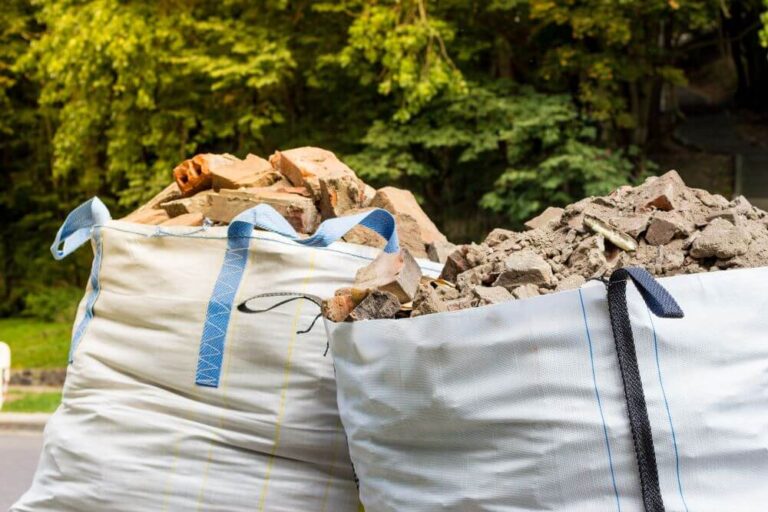Construction projects, regardless of scale, generate significant amounts of waste. From demolition debris to excess materials, managing construction waste responsibly is crucial to reducing environmental impacts and promoting sustainability. By adopting innovative disposal methods, contractors and homeowners can minimize landfill contributions, recycle usable materials, and even cut down on building project expenses.
This article explores innovative, sustainable, and environmentally friendly ways to dispose of construction waste. Read on for more.
Understanding Construction Waste
Construction waste includes a wide range of materials, from scrap metals and wood debris to hazardous waste like lead-based paint or medical waste. Building demolition produces bulky waste such as concrete slabs, brick, and asphalt shingles, while new construction projects generate excess materials like untreated lumber and particleboard.
To handle these materials efficiently, it’s essential to categorize waste types:
- Recyclable materials: Scrap metal recycling, wood pallets, and asphalt concrete can often be sent to a recycling center.
- Hazardous materials: Paint cans, appliances containing refrigerants (like air conditioners), and lead-based products require special care in waste disposal.
- Usable materials: Donating building components like doors, windows, and fixtures can benefit future projects.
- General solid waste: Non-recyclable debris may need disposal in roll-off dumpsters or transfer stations.
One key aspect of managing construction waste is implementing concrete washout solutions to prevent harmful runoff. Proper handling of concrete slurry and other heavy materials ensures compliance with environmental regulations while keeping job sites clean.
By correctly identifying and categorizing construction waste, you can ensure safer disposal and maximize recycling efforts.
Smart Disposal Methods
Adopting innovative disposal methods, such as the ones below, can help reduce the environmental impacts of construction waste, lower costs, and improve efficiency on any project:
1. Reduce Waste Through Planning
Careful planning of construction methods helps minimize excess materials. Ordering precise amounts of lumber, concrete, and other building supplies reduces leftover scrap.
2. Reuse and Donate
Many building materials, such as wood crates, brick, and even household appliances, can be repurposed or donated to organizations that accept building material donations.
3. Recycle Whenever Possible
Locate a nearby recycling facility or recycling drop-off location for materials like scrap metals, untreated lumber, and asphalt removal products. Some waste companies specialize in recycling for bulbs, mail recycling, and other niche materials.
4. Use Temporary Roll-Off Dumpster Rentals
For demolition waste or bulky waste disposal, renting a temporary roll-off dumpster from a reputable dumpster supplier ensures proper containment and transport to a disposal facility.
5. Partner with a Waste Recycler
An independent waste hauling company or environmental services provider can help segregate waste types, ensuring recyclable materials are processed correctly while hazardous waste is handled safely.
6. Proper Handling of Hazardous Waste
Materials like medical waste, lead-based paint, or certain appliance items pose health risks if not disposed of properly. Always follow local regulations and use certified disposal facilities.
With these strategies, you can minimize waste on your project while maximizing recycling and reuse opportunities.
Choosing the Right Disposal Services
When selecting a waste company, consider their network of landfills and transfer stations. A reliable rubbish service or private trash removal service should offer:
- Flexible dates of service
- Options for a junk box or private dumpsters
- Expertise in handling different waste types
For large demolition projects, a professional junk removal team with a network of drivers can streamline waste transport.
Zero-Waste Construction: Is It Achievable?
While eliminating construction waste may seem unrealistic, some projects are proving that near-zero waste is possible with careful planning and innovative practices. By prioritizing modular construction, precise material ordering, and on-site sorting, builders can drastically reduce excess debris. Additionally, partnerships with specialized recycling facilities and material reuse programs help divert almost all waste from landfills.
However, challenges remain, particularly with hazardous materials like asbestos or contaminated soil, which require specialized disposal. Smaller contractors may also struggle with the upfront costs of zero-waste methods, such as deconstruction labor or advanced sorting systems. Still, as sustainable building standards evolve and recycling technologies improve, zero-waste construction is becoming an increasingly attainable goal for forward-thinking projects.
DIY Construction Waste Management for Homeowners
Home renovations and small-scale projects can generate surprising amounts of waste, but with the right approach, homeowners can manage it efficiently. To streamline recycling and disposal, start by sorting materials into categories like wood, metal, and hazardous waste (e.g., paint or adhesives). Many communities offer curbside pickup for specific items, while others have designated drop-off locations for scrap lumber, old fixtures, or broken concrete.
For reusable materials like cabinets, doors, or leftover tiles, consider donating to local recycling centers or online marketplaces. If renting a dumpster isn’t cost-effective, check with waste haulers about smaller junk removal services or bagster-style disposal options. With a bit of research and effort, even DIYers can minimize landfill contributions and handle construction waste responsibly.
Conclusion
Managing construction waste in an eco-friendly way requires thoughtful planning, recycling efforts, and responsible disposal. By reducing waste, reusing building materials, and partnering with a trusted waste recycler, construction and demolition projects can minimize adverse environmental risks while supporting sustainable building methods.
Whether you’re dealing with demolition debris from repairs to buildings or excess materials from new construction, adopting these strategies ensures a cleaner, greener approach to waste disposal.


